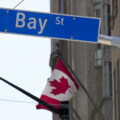The main drama on the screen during the Netflix show Ozark may be all the violence, drugs and lust driving the plot of the gritty crime drama, but fueling and funding all the mayhem is the money laundering operation of Marty Byrde, a crooked financial planner on the run.
Byrde’s scheme to launder money into the U.S. financial system on behalf of a dangerous Mexican cartel is to purchase cash-intensive businesses in a sleepy Missouri vacation region. The purpose is to disguise the cartel’s illicitly gained funds by mixing them in with the legitimate revenues of real businesses.
It’s not far off from reality, where vast criminal operations often have sophisticated money laundering operations running beneath the surface.
While money laundering may be increasingly prominent in pop culture, it has also been the subject of frontpage exposés in our national newspapers — even coining the term snow washing — to ongoing public inquiries like the Cullen Commission in British Columbia.
So what exactly is money laundering? At its core, it is an attempt to conceal the origin of illicitly gained funds for use in our financial system.
First, you have the predicate offense, aka the crime. This starts the trail of money. Using drug trafficking as an example, the profit from the sale of illicit drugs would be the precursor to money laundering.
The first step in “cleaning” the dirty money is placement. This is the stage when the proceeds of crime enter our shared financial system. Think of cash derived from illicit drug sales being deposited at an ABM into an account held with a federally chartered financial institution.
Placement is followed by the step of layering. The goal here is concealing the origin of funds, say the cash balance in a chequing account funded by illicit drug sales is transferred to an investment account and used to purchase shares in a legitimate publicly-traded company.
Finally, comes integration. This is the stage where criminal proceeds have an apparent legal origin. Say, from our previous example, dividends or the capital gains from the shares in the layering stage above.
How does Canada fare at stopping money laundering? Not great.
There you have it, as simple as that. The proceeds from a predicate offense, being placed, layered, and integrated into our economy. At which point the money can be used for seemingly legitimate purposes or, in the worst case, to finance subsequent criminal operations or terrorism.
But is it really that simple? Well, no, at least not without being detected. Governments, like ours, and financial institutions have a major shared interest in keeping the reputation of our domestic and global economies intact, as well as a duty to protect its citizens and customers alike. It is for this reason they have taken up the aptly named practice of anti-money laundering (AML).
Driven by international standards, evergrowing AML regulation and subsequent private sector investment in things like transaction monitoring and enhanced due diligence, Canadian financial institutions make an earnest effort to identify and report suspicious transactions to our federal financial intelligence unit, FINTRAC. This intelligence, captured by suspicious transaction reports, can proactively be disclosed by FINTRAC to law enforcement in the interest of national security or retroactively searched by law enforcement in the pursuit of criminal networks.
With all that in mind, and all the negative news surrounding Canada’s AML regime, it is fair to ask how Canada stacks up against our peers. And well… the answer is not great.
The Basel Institute on Governance’s 2020 AML Index ranks Canada behind 46 countries in our ability to combat money laundering and terrorist financing. Based on quality of AML framework, bribery and corruption risks, financial transparency and standards, public transparency and accountability, and legal and political risks, our AML Index score puts us well behind our Five Eyes peers — New Zealand (6th), Australia (17th), United Kingdom (25th), and the United States (41st).
Much has been made of Canada’s AML deficiencies. Most of which are described in detailed reports by former RCMP deputy commissioner Peter German, appropriately titled Dirty Money and Dirty Money 2. Perhaps no example is more demonstrative of the societal pervasiveness of money laundering, than the estimated 5 percent increase to Metro Vancouver home prices due to the influx of money being laundered through British Columbia’s real estate market.
So what can be done? How can our government and financial institutions keep up with the vast and resourceful criminal networks that launder an annual estimated equivalent of 2-5 percent of global GDP (approximately $800 billion to $2 trillion USD) through the global economy according to the United Nations Office on Drugs and Crime. The answer, while maybe a bit oversimplified, might be right in front of us: intelligence sharing.
The nature of criminal finance is one that knows no borders, it is always probing financial instruments and jurisdictions while using every tool at its disposal to obscure beneficial ownership. And as we look to slowly reopen our borders while coming out of the global COVID-19 pandemic, you can be sure criminal syndicates will be looking for new ways to take advantage of the free and open society we aim to reimmerse ourselves in. As we continue to foster and create legitimate ways for our capital and trade to move around the globe for our mutual benefit, criminal actors are simultaneously looking to use those channels for their nefarious gain.
Leadership and technological capability are currently present in Canada. In fact, Canada has led the way on innovative AML public-private partnerships (PPPs) to address crimes plaguing our communities. Internationally renowned PPPs Project Protect and Project Shadow are two sterling examples of what can come from the private sector partnering with law enforcement, NGOs, legislators, and regulators alike to forge a common ground for combatting human trafficking and child sexual exploition.
It is the legislative clarity and adaptability that have been lacking in the Canadian context. The legislative framework makes it very difficult for financial institutions and law enforcement to work together to untangle the complex webs of criminal networks. Ultimately leading to a relatively low level of money laundering related prosecutions in Canada.
As money laundering schemes become increasingly more complicated with the growing use of alternative forms of settlement and new technology forging novel methods of payment processing, Canada would be best served to adopt a national joint money laundering intelligence taskforce (JMLIT) similar to the one in the United Kingdom. This UK JMLIT model brings together law enforcement and the financial sector, with parliamentary oversight, in a permanent forum to exchange and analyze information in a dynamic way to tackle high-end money laundering schemes. Usually schemes that are multi-institutional and multi-jurisdictional.
It is clear Canada has AML thought-leadership coupled with significant investments being made in the money laundering detection space, but for a meaningful effort to stymie proceeds of crime from entering our financial system, the regulatory regime has to become more adaptable to the quickly changing financial landscape, giving law enforcement and financial institutions more bandwidth to evolve and collaborate on new transaction monitoring typologies, discuss live tactical intelligence, and provide policy feedback to eliminate current vulnerabilities.
It is at that point that we can reverse our current reputation that has the unfortunate subject of money laundering top of mind.
Recommended for You

‘Another round of trying to pull capital from Canada’: The Roundtable on Trump’s latest tariff salvo

‘We knew something was coming’: Joseph Steinberg on how Trump is ramping up his latest tariff threats against Canada

Rudyard Griffiths and Sean Speer: Canada’s high-stakes standoff with Trump

Falice Chin: The ‘wild and weird’ Calgary Stampede



